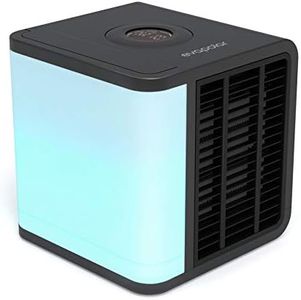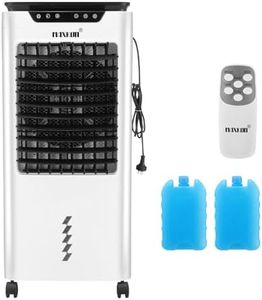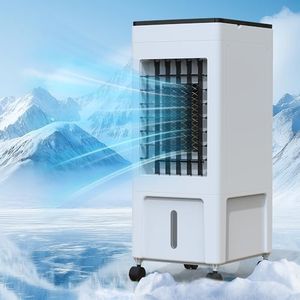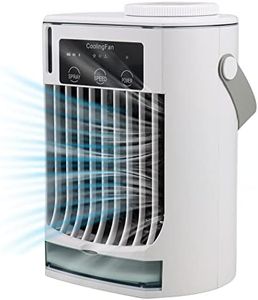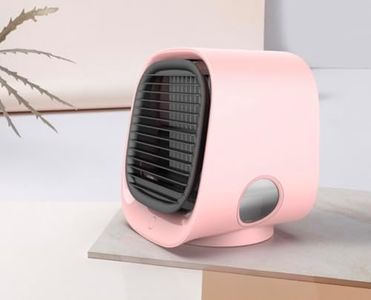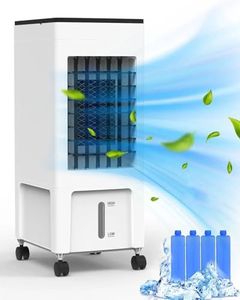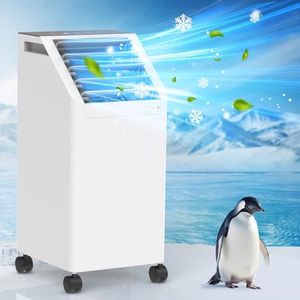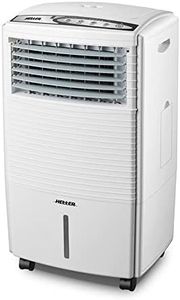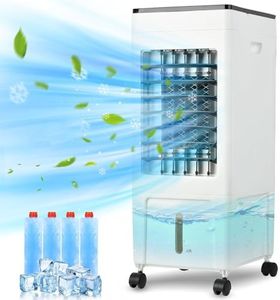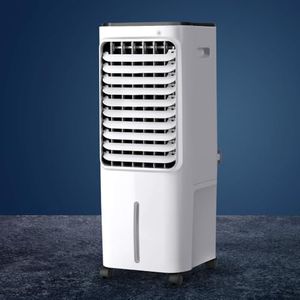We Use CookiesWe use cookies to enhance the security, performance,
functionality and for analytical and promotional activities. By continuing to browse this site you
are agreeing to our privacy policy
10 Best Portable Evaporative Coolers
From leading brands and best sellers available on the web.Buying Guide for the Best Portable Evaporative Coolers
Choosing a portable evaporative cooler is all about matching the cooler’s capabilities to the space you want to cool and your specific climate conditions. Unlike conventional air conditioners, evaporative coolers use water to chill air and are most effective in hot, dry environments. They are popular because they use less energy, are easy to move around, and double as humidifiers. Before making a decision, you'll want to look at the size of your space, how portable you need the device to be, and what special features suit your lifestyle. Understanding the key specifications will help you buy a unit that keeps you comfortable without wasting energy or effort.Cooling Capacity (Coverage Area)Cooling capacity, usually listed in square feet or square meters, tells you how large of an area the evaporative cooler can handle. This is critical because a unit that's too small won’t cool effectively, while one that’s too large could waste water and electricity without providing better comfort. Typically, smaller coolers suit personal spaces or single rooms (less than 200 sq ft), medium sizes cover living rooms or garages (200-500 sq ft), and large or commercial-sized models serve big open areas or outdoor gatherings (over 500 sq ft). To pick the right capacity, measure your space and select a cooler rated just above that to ensure efficient cooling.
Water Tank CapacityWater tank capacity affects how long the cooler can run before it needs refilling. This is measured in liters or gallons. Smaller tanks (under 10 liters) suit desktops and small rooms and need more frequent refills, while medium tanks (10-30 liters) can handle bedrooms or living rooms for a few hours at a time. Large tanks (over 30 liters) are suitable for big spaces or continuous all-day use. Choose a capacity that balances portability with how often you’re willing to refill it, and consider your typical daily use when making this choice.
Air Flow Rate (CFM or m³/h)Air flow rate, often stated in CFM (cubic feet per minute) or m³/h (cubic meters per hour), measures how much air the cooler can move. Higher values mean more air movement and faster cooling, which is better for bigger or hotter spaces. Low air flow (under 500 CFM) works for personal use, medium (500-2000 CFM) fits standard rooms or patios, and high flow (2000+ CFM) is for large, open areas. Match the air flow to your space—the bigger and more ventilated the area, the higher the needed CFM.
Portability FeaturesPortability features like caster wheels, built-in handles, and compact design make it easier to move the cooler from room to room or outdoors. If you need to cool different areas at different times, or if you may need to store the unit when not in use, these features will be very valuable. Lightweight and easily mobile models suit apartments or frequent movers, while heavier-duty coolers with sturdy wheels are better for larger, more permanent setups.
Fan Speed and Control OptionsFan speeds and control options let you adjust the cooling intensity and air flow. Most coolers feature two or three speed settings, and some offer additional modes like sleep or natural breeze. Remote controls, timers, or smart connectivity can also be handy, allowing easy operation from a distance. If you like flexibility and comfort, look for models with several speed choices and user-friendly controls. Simpler options are good for those who just want to set it and forget it.
Water Refilling MethodsSome coolers are refilled manually by pouring water into the tank, while others may allow hose connections for continuous fill. Manual refill is suitable for occasional use or smaller tanks, but becomes tedious for big tanks and frequent operation. If you plan to run your cooler for extended periods or want low maintenance, check if continuous filling options are available.
Filter and MaintenanceEvaporative coolers use pads or filters to evaporate water and catch dust. It’s important to check how easy these filters are to access, remove, and clean, since regular maintenance keeps the air fresh and the cooler running efficiently. Washable or replaceable filters are a plus for allergy sufferers or those who want long-term reliability. If you value simple upkeep, pick a model with straightforward filter access and clear cleaning instructions.

